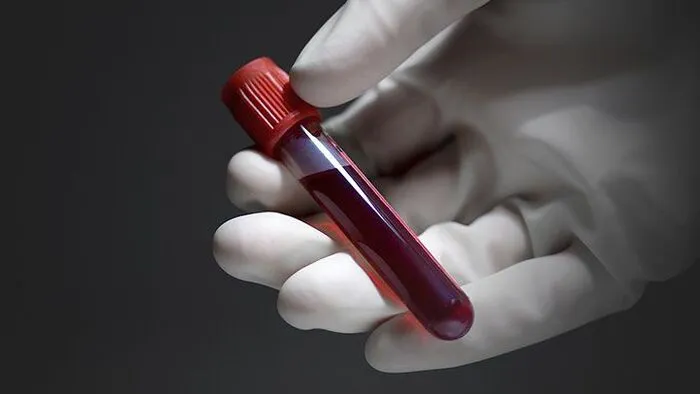Hey Medchunkers! Today, we’re going to talk about something important: your red blood cells and how they relate to a condition called anemia.
So, let’s start with the basics. Red blood cells are abbreviated as RBCs. These little, disc-shaped cells act as the body’s “superheroes,” transporting oxygen from the lungs to wherever it is needed. You can think of them as little oxygen delivery trucks!
When your red blood cell count is low, it indicates that your blood doesn’t have enough of these vital cells. Not having enough red blood cells means your body isn’t getting the oxygen it requires, which is obviously problematic. And that’s where anemia comes into the picture.
Anemia is like a warning sign that your body isn’t getting the oxygen it requires to function properly. Imagine trying to run a race with only half the oxygen you need – you’d get tired really quickly, right? That’s what happens when you have anemia.
There are several reasons why someone might have a low RBC count and develop anemia. One of the most common reasons is a lack of essential nutrients, like iron, vitamin B12, and folic acid. These nutrients are like the building blocks for red blood cells. Without them, your body can’t make enough of these important cells.
Low red blood cell count can also be caused by issues in the bone marrow, the body’s “factory” for producing new RBCs.
Now, you might wonder, “How do I know if I have a low RBC count and anemia?” Well, your body gives you some clues. You might feel tired all the time, even after a good night’s sleep. A lack of oxygen can cause your skin tone to fade and make you look unhealthy. You may also experience lightheadedness, difficulty breathing, and a rapid heartbeat as your body fights for oxygen.
But if you do encounter these symptoms, you shouldn’t panic. The good news is that anemia is both common and treatable. Your wellness wizard will be able to help you by checking your RBC count and determining the root of the problem through a series of blood tests.
If it turns out you do have anemia, the treatment plan will depend on the cause. If it’s due to a lack of nutrients like iron or vitamin B12, your wellness wizard might recommend dietary changes or supplements to boost those levels. In some cases, you may need medication or other treatments to address the underlying issue.
The good news is that anemia can often be managed, and you can start feeling better once your RBC count gets back to normal. Just remember to follow your wellness wizard’s advice and take any prescribed treatments or supplements regularly.
Low RBC count can indeed lead to anemia, which can leave you feeling tired and unwell. But don’t fret! With the guidance of doctors from Medchunk, you can find the cause and develop a plan to get those red blood cell numbers back up where they should be. So, if you ever suspect something might be off with your energy levels or your skin starts looking pale, don’t hesitate to reach out to us. We are here to help you stay healthy and happy!
Let us talk about something important for those dealing with anemia – the best foods to eat to help your body feel its best.
Foods High in Iron:
First on our list are foods rich in iron. Iron is like a superhero nutrient when it comes to anemia because it helps your body make more red blood cells. Think of it as the building block for those little oxygen carriers.
1. Lean Meats:
Lean meats like chicken and turkey are excellent sources of heme iron, which is easily absorbed by your body. These meats not only provide iron but also high-quality protein that supports overall health. Be sure to include them in your meals regularly.
2. Fish:
Fish, particularly varieties like salmon, tuna, and sardines, are rich in both iron and heart-healthy omega-3 fatty acids. This makes them an excellent choice for those with anemia, as they offer a double benefit.
3. Beans and Lentils:
For our vegetarian and vegan friends, beans and lentils are fantastic sources of iron. They are also packed with fiber and protein, making them a nutritious addition to your diet. Some popular options include chickpeas, black beans, and red lentils.
4. Tofu:
Tofu, a soy-based product, is not only versatile in the kitchen but also a great source of iron for plant-based diets. Incorporate tofu into stir-fries, salads, or sandwiches to boost your iron intake.
5. Green Leafy Vegetables:
Don’t forget your greens! Spinach, kale, and Swiss chard are loaded with iron, as well as other essential vitamins and minerals. These leafy vegetables are also low in calories, making them a guilt-free addition to your meals.
Vitamin C-Packed Fruits and Veggies:
Vitamin C is like a helpful sidekick to iron. It helps your body absorb iron better. So, pair your iron-rich foods with vitamin C-packed fruits and veggies like oranges, strawberries, bell peppers, and broccoli. This combo can supercharge your body’s ability to absorb the iron it needs.
Fortified Foods:
Sometimes, fortified foods like cereals, bread, and pasta can be a good option. They are often enriched with iron and other nutrients that your body needs. Just be sure to check the labels to make sure they’re right for you.
Eggs:
Eggs are a versatile and nutritious choice. They contain not only iron but also vitamin B12, which is essential for healthy red blood cell production.
Nuts and Seeds:
Snacking on nuts and seeds like almonds, cashews, and pumpkin seeds can give you a healthy dose of iron. Plus, they’re easy to munch on throughout the day.
Dried Fruits:
Dried fruits like raisins, apricots, and prunes can be a tasty way to boost your iron intake. They’re also handy for on-the-go snacking.
Whole Grains:
Foods like whole grain bread, brown rice, and quinoa provide a good amount of iron and other essential nutrients. They’re a great choice for a balanced diet.
Additional Tips:
Here are some more tips to help you manage anemia through your diet:
1. Cook in Cast Iron:
Using cast iron cookware can naturally increase the iron content of your meals. Cooking acidic foods like tomatoes in cast iron pots can also boost your iron intake.
2. Avoid Tea and Coffee with Meals:
Tea and coffee contain compounds that can inhibit iron absorption. It’s best to consume these beverages between meals rather than with your iron-rich foods.
3. Be Mindful of Calcium:
While calcium is essential for strong bones, excessive calcium intake can hinder iron absorption. Ensure you’re getting the right balance by spacing out your calcium-rich foods and iron-rich foods.
Remember Medchunkers, it’s not just about what you eat but how you eat it. Eating a variety of these nutrient-rich foods regularly can make a big difference in managing anemia.
When it comes to anemia, the right foods can be like medicine for your body. By including these iron-rich foods and making smart choices, you can help your body build up those red blood cells and start feeling more energetic and vibrant. Remember, a balanced diet filled with these friendly foods can go a long way in helping you on your path to wellness.

